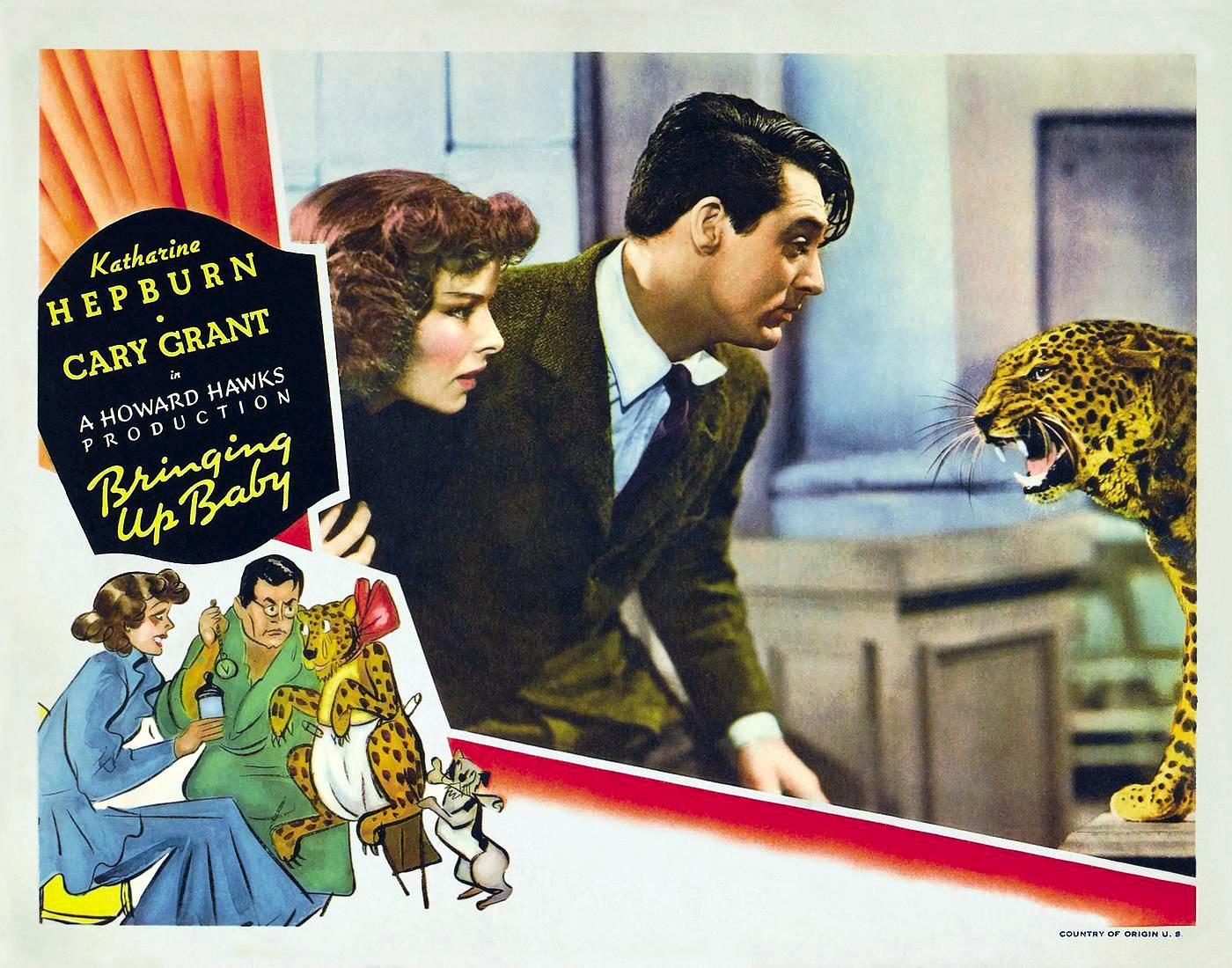
Screwball comedy
Screwball comedy is a film subgenre of the romantic comedy genre that became popular during the Great Depression, beginning in the early 1930s and thriving until the early 1950s, that satirizes the traditional love story. It has secondary characteristics similar to film noir, distinguished by a female character who dominates the relationship with the male central character, whose masculinity is challenged,[1] and the two engage in a humorous battle of the sexes.[2]
The genre also featured romantic attachments between members of different social classes,[3] as in It Happened One Night (1934) and My Man Godfrey (1936).[2]
What sets the screwball comedy apart from the generic romantic comedy is that "screwball comedy puts the emphasis on a funny spoofing of love, while the more traditional romantic comedy ultimately accents love."[4] Other elements of the screwball comedy include fast-paced, overlapping repartee, farcical situations, escapist themes, physical battle of the sexes, disguise and masquerade, and plot lines involving courtship and marriage.[2] Some comic plays are also described as screwball comedies.
History[edit]
Screwball comedy has proved to be a popular and enduring film genre.[7] Three-Cornered Moon (1933) starring Claudette Colbert, is often credited as the first true screwball,[8] though Bombshell starring Jean Harlow followed it in the same year. Although many film scholars agree that its classic period had effectively ended by 1942,[9] elements of the genre have persisted or have been paid homage to in later films. Other film scholars argue that the screwball comedy lives on.
During the Great Depression, there was a general demand for films with a strong social class critique and hopeful, escapist-oriented themes. The screwball format arose largely due to the major film studios' desire to avoid censorship by the increasingly enforced Hays Code. Filmmakers resorted to handling these elements covertly to incorporate prohibited risqué elements into their plots. The verbal sparring between the sexes served as a stand-in for physical and sexual tension.[10] Though some film scholars, such as William K. Everson, argue that "screwball comedies were not so much rebelling against the Production Code as they were attacking – and ridiculing – the dull, lifeless respectability that the Code insisted on for family viewing."[11]
The screwball comedy has close links with the theatrical genre of farce,[4] and some comic plays are also described as screwball comedies. Other genres with which screwball comedy is associated include slapstick, situation comedy, romantic comedy and bedroom farce.
Later films thought to have revived elements of the classic era screwball comedies include:
Elements of classic screwball comedy often found in more recent films which might otherwise be classified as romantic comedies include the "battle of the sexes" (Down with Love, How to Lose a Guy in 10 Days), witty repartee (Down with Love), and the contrast between the wealthy and the middle class (You've Got Mail, Two Weeks Notice). Many of Elvis Presley's films from the 1960s had drawn, consciously or unconsciously, the many characteristics of the screwball comedy genre. Some examples are Double Trouble, Tickle Me, Girl Happy and Live a Little, Love a Little. Modern updates on screwball comedy are also sometimes categorized as black comedy (Intolerable Cruelty, which also features a twist on the classic screwball element of divorce and remarriage). The Coen Brothers often include screwball elements in a film which may not otherwise be considered screwball or even a comedy.
The Golmaal movies, a series of Hindi-language Indian films, has been described as a screwball comedy franchise.[50][51]
Screwball comedy elements in other media and genres[edit]
The screwball film tradition influenced television sitcom and comedy drama genres. Notable screwball couples in television have included Sam and Diane in Cheers, Maddie and David in Moonlighting, and Joel and Maggie in Northern Exposure.[52][53]
In his 2008 production of the classic Beaumarchais comedy The Marriage of Figaro, author William James Royce trimmed the five-act play down to three acts and labeled it a "classic screwball comedy". The playwright made Suzanne the central character, endowing her with all the feisty comedic strengths of her classic film counterparts. In his adaptation, entitled One Mad Day! (a play on Beaumarchais' original French title), Royce underscored all of the elements of the classic screwball comedy, suggesting that Beaumarchais may have had a hand in the origins of the genre.
The plot of Corrupting Dr. Nice, a science fiction novel by John Kessel involving time travel, is modeled on films such as The Lady Eve and Bringing Up Baby.[54]